art deco
watford to roydon marina
Eager to get started on our new adventure I was up and about by 7am, waking Joyce with a cup of tea. I had already completed my engine room checks; cooling system water and oil levels, checked in weed hatch for debris and had a general look around to make sure everything is as it should be. This would become a ritual that I did every morning before moving off, and as time went by other tasks were added as new situations occurred. By 9am we were ready to go, so I fired up the engine and we slipped our mooring and set off on our first cruise aboard Art Deco.
Over the previous few days I had looked many times at the route we would take up to Roydon, courtesy of the Nicholson map book, trying to envisage what problems we would encounter, but there was so much much information to digest, it was driving me mad. In the end I decided it was futile and not what this new lifestyle of ours was about; we were free agents with no time scale to follow and no pressure to be anywhere at any time; for the first time in our lives we could just please ourselves. With this in mind, all I thought about as we set off was that in one and a half miles we would encounter a lock and our first big test. I knew the theory of how they worked and had read about the correct way to pass through them, but had never done it before. It seemed simple enough, but would that translate into practice? Well we would soon find out, Lot Mead lock was fast approaching! We actually managed alright, it was a big help that we were on our own, with no other boats waiting, and no one watching as two rookie boaters negotiated their first lock. We were far from slick, but at least we didn’t hit anyone or anything, which was a bonus.
As the day passed and we successfully negotiated a few more locks our confidence grew and I found skippering the boat relatively easy. My previous boating experience had been limited to cruisers so I had never used a tiller, this was a new experience for me and I liked the feel of it. It was so tactile and responsive and I could feel the rudder as it moved in the water, very reassuring, I loved it!
As I settled into the cruise and relaxed, my attention turned to the engine, or more accurately the electrical system, and I was confused. No matter how many revs the counter showed, the readout from the batteries was showing a minus figure when in fact it should be a plus, and the figures should fluctuate as the revs changed, but they didn’t, all very strange, I would need to have a conversation with the engineer at some point in the near future.
We decided to call it a day around four in the afternoon and, with the help of another boat owner who came to our aid we tied up for the night, I was exhausted and Joyce was about the same. Pleased with the first day of our new lives we cooked a meal and celebrated with a bottle of Champagne, one we had bought to break over Art Deco as she was launched. It was such a hectic day and Joyce wasn’t there for the launch so we didn’t get the chance to have an official ceremony, fitting actually as it reflected all the problems we had encountered on the build. Never the less we toasted ourselves for the resilience we had shown and looked forward to our future.

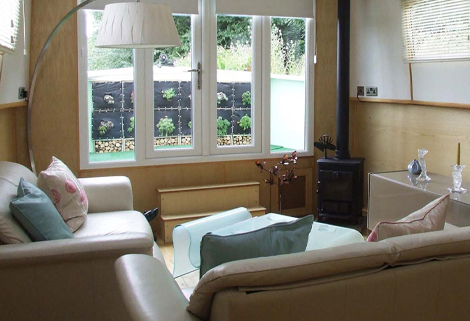
We were early to bed that night but the following morning I was awakened by a loud crash coming from the saloon. I dashed next door to find the bottom drawer of our air units on the floor, and what’s more the whole boat was leaning slightly to one side. After a minute it dawned on me what had happened. I had been told by the boater who helped us to moor the previous evening that there was a shelf under the water, but I didn’t get the significance of it at the time. What had happened was that the water level had dropped overnight and when the lock downstream had been opened by the first boat through that morning it had dropped a little more and Art Deco had snagged on the shelf, resulting in the lean. I quickly roused Joyce from her sleep and together we loosened the mooring ropes and with the help of the engine we managed to free the boat. Only the second morning into our first cruise and already we had experienced some drama. Over time we would come to realise that drastic events and situations such as this were common place, all part of the wonderful life as a live aboard boater.
We had settled easily into our new life, but one thing was becoming increasingly obvious to me and that was just how unprepared I was for living aboard a boat. I had spent many hours researching all the technical aspects whilst designing the boat (don’t mention toilets to Joyce, talk of them nearly scuppered the project before it started) but no time had I given to the day to day requirements. Having no mooring stakes on the first day is just one example of the many things I had given no thought to whatsoever, I had been so focused on the boat itself. It all came to a head on the third day. We had reached the point where we would leave the Grand Union Canal behind and make a left turn onto the Paddington Arm. I had seen in the Nicholson that there was a water point there and knew we must be getting low, remembering our holidays on the Norfolk Broads. We tied up by the point only to find just a tap with no hose attached and I was having a good old rant about thieving b**tards when another boat pulled in behind us. He must have heard me because he came over with a hosepipe under his arm, looked at me with a smile on his face and said, I think you need one of these. It was only after talking to him that I learned that every boat had its own hosepipe, to say I was embarrassed is an understatement but as the saying goes; every day is a school day.
Onto the Paddington arm, a section with no locks to work, but one big obstacle, the ‘Maida Tunnel’. At 249 metres long and dead straight it should pose no problem, or so I thought, as we passed through the delightful Little Venice. As we approached the tunnel entrance it looked extremely low and narrow. I could see no other craft coming in the opposite direction so I lined Art Deco up and made straight for the entrance. As we approached I turned on the bow light and could see the slimy walls on either side with the low arched roof and realised it was going to be very tight, especially so because of our ballast problem. We cautiously entered the tunnel and it was tight, we had around a 10 centimetres gap between the edge of the boat roof and the tunnel sides, I would need to keep a straight line and the concentration needed was immense, but we managed it with just a few scrapes to the paintwork.
I was glad to be through, but knew that up ahead we would shortly join the Regents canal, a very busy section I had read, with many moored boats, a good few locks and another tunnel. By all accounts it is an interesting and pleasant stretch, skirting round Regents park, passing by Primrose Hill and through Camden Town before entering the Islington Tunnel. At 878 metres long it is longer than the Maida Tunnel and consequently has a traffic light system allowing only one boat at a time to pass through. We knew what to expect this time and although it was just as tight as the Maida Tunnel it wasn’t quite as stressful and we managed with just a few scrapes. The paintwork would need a little TLC though, another job to add to the list when we reached Roydon.
The scenery didn’t disappoint and the three locks at Camden Town were especially vibrant. It was a Saturday when we passed through, one of those early spring days when you just want to be outdoors enjoying the sunshine after the long dreary winter. Every one was very friendly, so much so that it took us a good hour to pass through the three locks, people of all ages were interested, asking many questions about life aboard a boat, the main one being: is it cold in winter? The answer was, we didn’t know, we had that experience to look forward to.
Blog written on 5th June 2014
Finally, on Wednesday 28th May, we set off on our epic cruise down to Roydon. We had put 5cwt of concrete blocks into the front of the boat on the Tuesday; it had little effect but we decided to set of anyway and face the consequences. We had great trepidation at the thought of the thirty-six locks we had to go through to get to Roydon but surprisingly we soon got the hang of them and the first two days were okay, but as we approached London things went steadily downhill. The canal got narrower, the bridges and locks got tighter and moored boats on both sides were ever more present. Saturday 31st May was an epic day. We had spent Friday evening moored up by Kensal Green Cemetery, the resting place of the great Isambard Kingdom Brunel, one of my heroes. An early start on Saturday soon saw us entering Little Venice, a fantastic site but very busy with hundreds of boats of all shapes and sizes and all going in different directions, it was a nightmare trying to negotiate a sixty foot by twelve foot boat through, but we somehow managed it without an accidents. We turned a corner and there in front of us was the Maida Vale tunnel, a tiny half circle of stone in a shear cliff and as we got nearer I realised that it would be tight, very tight, and it was. There was no more than 10cm clearance at either side and it was impossible to steer a straight line. Unfortunately I hit the tunnel in a couple of places, but we were soon out, so not too bad, we thought, that is until we came into Camden, what a sight greeted us. It was a sunny Saturday afternoon and all the bars and cafes were packed and the canal side was heaving with people enjoying a drink, ready to watch a couple of novices negotiate the three locks that forms the centre of this vibrant area. We actually did okay and Joyce enjoyed the craic while I did all the manual work and steered the boat through, taking over an hour to get through the three locks. Relief was short lived as soon we approached the Islington tunnel, longer than the last one but hoping that it would not be as tight, but it was. I have never in my life had to concentrate so much as I did in the half mile going through that tunnel, but even then I hit in a couple of places, so a touch up job will be needed in the future. Sunday saw us out of central London and soon we were on to the Lee Navigation, the river that would take us most of the way to Roydon.
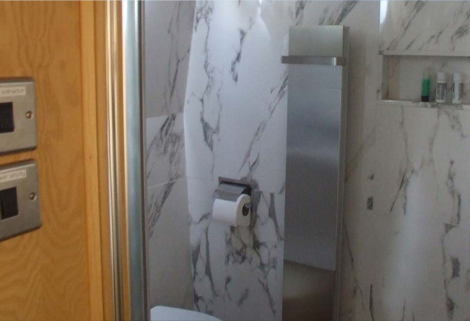
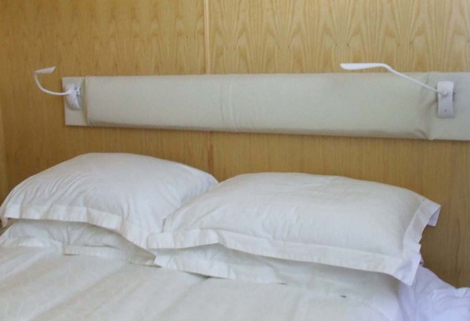
We were approaching the point on the Regents canal where we would make a left turn onto the Hertford Union canal, commonly known as ‘Ducketts’, and named after the man who first proposed it’s building. At just over a mile long with three locks, it runs along side the beautiful Victoria Park before it joins the river Lea Navigation. There were lots of moored boats and many looked like live aboard craft. It was obviously a very popular place and although we didn’t realise it at the time, in the coming months we would get to know it very well and would spend many enjoyable times in and around the area. We passed through the aptly named, Top lock, Middle lock and Bottom lock and with the Queen Elizabeth Olympic Park directly in front of us, we turned left onto the Lea Navigation. I suddenly had a strange sensation of space. We had been in the confines of a canal waterway since our launch at Watford and to emerge on to a relatively wide river was quite unnerving at first. Even Art Deco seemed to give a sigh of relief, thankful to be out of the claustrophobic environment of an urban canal and on to a wide section of water at last. It had taken us a couple of weeks to get to this point, admittedly we had been taking our time and getting used to our new lifestyle but it felt that we were near to closing the first chapter of our adventure. We found a place around Walthamstow Marshes to moor for the night and slept like babies, knowing that we were on the last leg of our journey and that with luck, in two or three days time, we would reach Roydon marina, our final destination.
The next morning we set off again. The river had a very different feel to the canal, there was a current, and we were going against it. Although it was not strong I could certainly feel it and had to increase the revs on the engine to keep up a decent speed. I assume it would get stronger after a few hours of rain, something no doubt we would experience in the near future, given the usual weather we have in the summer. There were boats moored on either side of the river, sometimes two and three abreast and the majority of them had all sorts of flotsam and jetsam aboard, from bicycles to literally the kitchen sink! It was obvious to us that many were residential boats, peoples homes, given the amount of firewood stacked on and around the craft and the numerous pots of flowers and vegetables of all shapes and sizes. Some were so dilapidated and stacked full of junk that we thought that they must be abandoned, until we glimpsed a face at a window or a smoking chimney.
At Tottenham lock we were in for a treat, it was mechanised, no labouring at this one, but isn’t it strange, all the time we had been manhandling the locks, winding up paddles, heaving open heavy lock gates, we had been left to our own devices. But at Tottenham and again at Stonebridge, another mechanised lock, there were other people around, very happy to press buttons and work the locks for us, funny that.
There was a water point at Stonebridge lock so we stopped to fill up (We had our own hosepipe now!) and I needed to check in the weed hatch; the engine seemed to be labouring and I guessed that the prop may be fouled. Checking the weed hatch was part of my ritual before we set off each day and it was free of debris this morning, but on occasions I had had to stop en-route to clear it. The culprit was usually a plastic bag, but this time I had a feeling it was something a little more substantial and I was not wrong. When I opened the hatch there was a mass of fabric wound around the prop and as I cut and pulled it just kept on coming until I had what looked like an old duvet on the engine room floor, and a double one at that! How the engine had not overheated I don’t know, but it was fortunate that I checked it when I did otherwise it could have caused a major problem.
We had noticed as we cruised up river away from central London, that around each lock there were small groups of boats moored that looked like they had a more bohemian feel to them with lots of people on the bank side out enjoying themselves and at Stonebridge there was even a barbecue in full swing, it seemed like a thriving community. Most of the people appeared to be young, although there were a few older folk who seemed to fit into that way of life quite well and everybody looked to be having a great time.
The problem with the fouled prop had delayed us and as it was getting late in the day we decided that after the next lock we would moor up for the night. According to Nicholson, Pickets lock was not mechanised but it didn’t bother us, we had worked enough manual locks now to know what to expect, the last one of the day would be no problem, or so we thought. We should have realised as we struggled to open the large metal gates that we might have a problem, but tiredness and complacency can affect your judgment, it certainly did for us that evening. It required both of us to open the gates as they were much heavier than the normal wooden ones, but once we had them open I climbed aboard Art Deco and brought her into the lock and then climbed on to the lock side, secured the stern rope to a bollard and went to help Joyce close the gates. We closed the tail paddles and Joyce took hold of the stern rope while I took the bow rope, secured it to a bollard and went to open the head paddles to fill the lock. We had done this many times and it was our preferred method, I’m sure other boaters have their own way, but this worked for us. With everything in place I went to open the first paddle and the lock started to slowly fill. As I opened the second a torrent of water serged through, throwing Joyce off balance and she struggled to control Art Deco as the force of the water hit the bow. Fortunately a gentleman who was close by saw the problem and rushed to help her averting what could have been a serious problem. We later found out that the paddles on this particular lock are extra large because the lock is so long and deep and we were not the first boaters to fall foul to it. It was fortunate for us that we were travelling up stream and filling the lock. Had we been traveling down stream the lock would empty very quickly and the stern could have caught on the lock cill, resulting in the boat tipping forward and water pouring into the bow and sinking her. We heard later that this had happened a few times at this lock, so whenever we passed through we were always extra diligent.
We were up and off early the next morning. We seemed to be following the old proverb: early to bed, early to rise, or had our body clocks changed to follow a more natural form, sleeping when it gets dark in the evenings, waking when it gets light in the mornings and spending time outdoors in between. Whichever it was, it was working for us, the stresses and strains of our previous life were well and truly behind us, reward we told ourselves for all the problems we had endured during the boat build. The next lock, Ponders End, was another large, deep lock but this time we knew what to do. We opened each paddle a little at a time, alternating, one after the other and let the water in slowly, it took a long time to fill but it caused no problems.
We had to get use to life on the river, everything moves at such a slow pace. I had a conversation with an old chap at one of the locks about life on the river. He had lived on a boat for over forty years and he gave me this advice. Imagine how long you think it will take to do a task or get to a particular place, halve it and add the two together, that's how long it should take. He said a similar thing about speed, think how fast you should be going, into a lock for example and halve it, that should be your speed. Wise words indeed and they served us well, we had no accidents whatsoever in all our boating years.
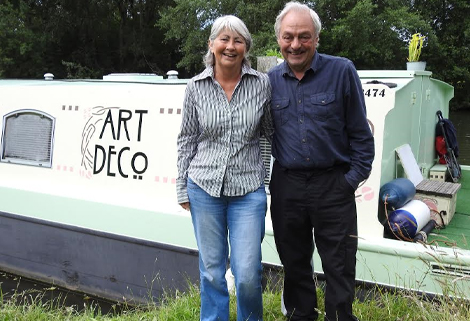
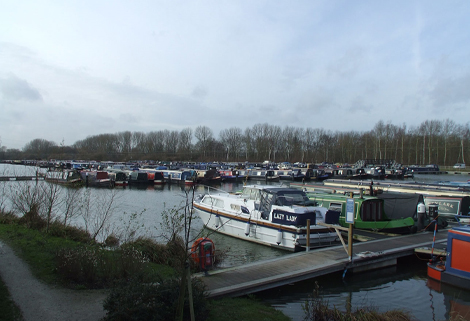
As we approached Enfield lock a boat was just about to come out, he must have seen us coming because he left the gates open and waved us in. When we entered I knew we had a problem: the lock was deep, with massive metal gates which I knew Joyce wouldn’t be able to open. After the drama at Pickets lock we had decided that I would stay on the boat to keep it under control and Joyce would work the lock, but I knew she wouldn’t be able to climb the slippery metal ladder that led to the lock side. Luckily, just as we entered the lock a boat crew arrived from the opposite direction and started to work the lock for us and to my huge relief they told us both to stay on board. It was our first encounter with the wonderful river community that we had joined.
Exiting Enfield lock is like traveling through a portal, suddenly we are surrounded by nature, gone are the factories, warehouses and pylons that have been our companions for the last few days. We are amongst green fields and hedgerows, without a pylon in sight! The first town we come to is Waltham Abby, it looks a decent place and we find a mooring, so decide to stop for lunch, have a look around and take on supplies, we are running low on beer! It is a lovely old town with some fine buildings, including of course the Abbey and it still has its market square full of traders, and is bustling today as we pass through. Back on Art Deco we decide that as we have such a pleasant mooring we will have a leisurely afternoon and evening and carry on our journey tomorrow. After our evening meal we take a walk down the tow path to survey our next obstacle, a lock of course, and on our way back as the light begins to fade a large white owl swoops past us, a good omen we hope for tomorrow, because with a bit of luck we may make it to Roydon, but we are not in a race, what will be will be.
An early start again, we want to get to Roydon today and there are eight locks in our way, it's going to be a challenge. The locks on the river are not as easy to work as the ones on the canal, the gates are much larger and very hard to open and close. This is slowing our progress because we have to moor Art Deco before each lock so that both of us can disembark to open and close the gates. Nevertheless we make good progress, helped by the fact that there’s little traffic on the river and by lunch time we are at Fielder’s weir where we pass a lovely riverside pub, the Fish and Eels, and note it for future reference. Not far past the pub we turn onto the river Stort and the final leg our journey. The Stort is far narrower than the Lea, with lots more bends to it, Art Deco looks out of proportion, far too large a craft for such a small river and I am praying we get to the marina soon or we will run out of water! My prayers are soon answered when we spot a large board directing us to the left and into a small lock with the marina just beyond. We had made it!
We know exactly where our mooring is located as we had visited the marina whilst the boat was being built and we still had a car, but I was nervous. All craft had to be moored stern on and that was a manoeuvre I had not yet attempted. It would be compounded by the fact that the bow thrusters were out of the water due to the ballast problem and would be useless, the only steering I had was the rudder and that only works when going forward. Our mooring was between two boats, just wide enough for Art Deco to fit, and with much difficulty and many attempts we managed it with help from the boaters on either side and folks on the pontoon.
We had been running on adrenalin and mugs of tea for seven days, along with the occasional beer, my body ached from head to toe and I was black and blue and had extensive scratches all over my arms and a cut on my nose from where the lock windless slipped in my hand while winding down the paddles, some semi-retirement this was turning out to be! We were looking forward to relaxing after our final, arduous day but just as we had finished tying up a cheery voice called out “permission to come aboard”. I turned around to find a total stranger standing there holding what looked like a small dish under his arm. He introduced himself as Martin, the guy who is supplying the satellite TV equipment for the boat. Apparently he was in the area and although we had arranged that I would call him when we were in the marina he thought he would have a quick look to familiarise himself with the place, not expecting us to be there. He insisted on setting up the system, saying it was a simple job and wouldn’t take long to do, so we agreed and put the kettle on as he got to work.
Joyce and myself were winding down with a mug of tea when Martin joined us with a worried look on his face. “We have a problem” he says, the cabling is all wrong. He had previously explained in detail on one of our many telephone conversations how the cabling was to be done for the system he would be installing. I had passed this on to the boat builders, but it seems they had either forgotten, or more likely ignored this and installed the cables as they normally did, ignoring the fact that we wanted cabling for three satellite televisions. The ‘simple’ installation took around three hours to complete and by the time Martin had finished it was dark and we were exhausted. He had managed to get all three TV’s working but because there was only one set of cabling installed, all three sets would only show the program that the main set in the saloon was tuned to. We thought this would not be a problem, the televisions were there for the guests, they could choose what they wanted to watch, they just had to make sure the saloon set was tuned to the correct station before they went into their bedroom cabin. The irony of the whole saga is that the TV in our cabin was not used, we hadn’t watch TV in bed when we were land bound, and that continued the whole time we lived on Art Deco, there were so much more interesting things to see and do.
We slept like babies that night and woke up late to a lovely early summer day. We ate breakfast on the back deck of the boat and chatted to fellow boaters who came by to welcome us to the Roydon marina community. All was looking good and our dream was finally becoming reality, but there was big black cloud on the horizon; I had to sort out the electrical system and get familiar with the hybrid side of things. Graham, the engineer from the manufactures should have commissioned the engine before we left Watford but as I mentioned earlier he broke his ankle and was immobile. I needed to call him to arrange a visit so I asked Joyce to make a cup of tea while I spoke to him. I was just dialling the number when I heard the words that I had come to dread: “Dave we have a problem”. As Joyce turned on the electric kettle she heard a loud click and all the appliances went dead. The digits on the battery monitoring system were all flashing zero and and when I opened the cupboard where the inverter was housed there were red lights flashing. I started the engine but it made no difference, the batteries were completely flat. I won’t bore you with the details of my conversation with Graham, lets just say it wasn’t pleasant and contained many swear words, but in the short term I was told to hook up to shore power. We had mains power supply at the mooring, but no cable to connect it to the boat, just another one of my failings regarding the practical side of living on a boat. I went to the marina chandler’s, but they didn’t have any in stock and said there was a camping supplies store in Harlow where I could get one. Again I won’t bore you, but after 2 hours, a train journey there and back and around 2 miles walk I finally had a cable. I hooked up and the electrics came to life, and strangely, there was a ‘hum’ coming from the inverter, a sound that I had not heard before. Later I would find out that the ‘hum’ was in fact a cooling fan that engaged whenever the inverter was working. It was obvious to me why the batteries were flat, the had not been charging at all. On the positive side, Graham agreed to come down in two days time, when he assured me that he would sort out all the problems and explain exactly how the hybrid system functioned and what maintenance it would need. I felt much better and less stressed knowing the fact that I would know how the electrics worked and more importantly how to fix them should a problem occur.
The next couple of days were spent relaxing and settling into life on the boat. We had been so busy with the journey that we hadn’t really had time to appreciate the boating lifestyle. Hopefully now we could slow down and start to live life as we had imagined when we first conceived our future on the water. A few days later as promised, Graham arrived early one morning and got straight down to work. I had kept him informed about all the problems we had encountered and he said he was pretty sure he knew the cause, although he wouldn’t tell me over the phone. I got the impression that he didn’t want anyone playing with his hybrid baby. I have a basic knowledge of mechanics from helping my dad fix and service his car, so I knew my way around an engine but the problem was with the hybrid adaption, something I had no knowledge of at all. I had expected him to go straight down into the engine room but instead he dismantle the steps that led from the rear deck to the kitchen. As he removed them and then an inspection panel, the rear part of the hybrid was revealed and I immediately saw the problem. There was a large pulley wheel, with a smaller one at its side, but no belt between them, it was lying on the engine room floor. A new belt was soon fitted and the steps replaced but I had so many questions that needed answering. We sat down with a mug of tea and Graham explained that the large pulley was attached to the flywheel of the Beta diesel engine and the small one to the 48volt alternator and with the belt missing there was no charge going into the twenty four 2 volt batteries. My next question was; what caused the belt to fail? This was more difficult for him to answer, all he could say was that the engine with the hybrid adaption was one unit and had been fully tested before it left his workshop. The belt was not worn or broken and he thought that the tension had become slack and the belt had somehow worked itself off the pulley. The fitters had no cause to do anything with the engine, it went in place as one unit, so it was a mystery as to how the belt had become loose. I was not happy with his explanation but had to accept it, only time would tell if it was true. Graham then gave me a crash course on the operation and maintenance of the whole system followed by a cruise on the river to show me how to engage the electric drive and how to interpret all the dials and read outs. There was a lot to take in but it was all logical and straightforward and as we returned to the marina I was a happy man knowing I had a good working knowledge of the hybrid engine and understood the electrics a little better.
Next on the list of people to contact was the boat builder to solve the blast problem and there were other little ‘snags’ to fix too. We had been so eager to get away that towards the end that jobs were rushed and corners cut, but now they needed sorting. I could write a whole page and probably more around this episode but let's gloss over it, and just say it was painful at the time but everything was eventually fixed.
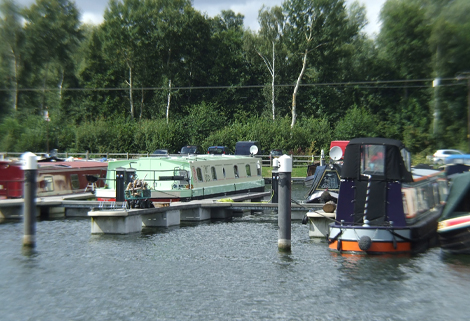
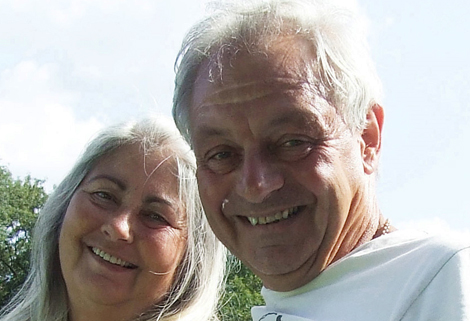
Last entry on the blog
We have been at Roydon now for six weeks and finally have a fully functioning boat! The engineer came a couple of weeks ago and spent a day sorting out the engine and charging system, apparently a drive belt had come off due to the adjusting bolt on the generator working loose, we have our suspicions who the culprit is, but that would be telling! Graham, the engineer was a star and sorted everything out and went above and beyond the call of duty, the upshot being I now know my way around all the systems. After many false starts and promises, the boat builders finally came down this week with bits and pieces to finish off the fit out and most importantly re-ballasted the boat which involved taking up part of the floor in the saloon, so not a quick job, but the outcome was worth it, we no longer have to bail out the wet room when we have a shower. In fact they did a grand job and the boat is now resplendent in all its glory! We have the fire and the fold up table in place, both bedrooms carpeted and the kitchen splash backs fitted so we have been keeping ourselves busy. After all the trials and tribulations of the last twelve months we feel we can finally move on. We constantly congratulate, ourselves on our decision to move south, the weather being glorious virtually every day since we arrived here and although it is a very rural area we are only forty minutes from central London and one hour from Cambridge on the train. We are enjoying this new lifestyle, no car, no stress and no more trips to the supermarket, order on line and it is delivered direct to our boat, what a result.
The boat performs really well as a living space and we have adapted well to this new lifestyle, it is very different from the conventional but we love it. We had family stay with us for three days a couple of weeks ago and it worked really well even though the boat was not perfect, my sister bailing out the wet room after a shower will stay with me for the rest of my life, it was really funny but all done in the best possible taste! Joyce is really happy with the kitchen, which pleased me no end, we had many a disagreement regarding this room when planning the layout, it was easy for her to cook for four people, so bodes well when we take on paying guests. We had our first trip out whilst my sister and brother in law were with us, down the river Stort and on to the Lee navigation for a couple of miles to the wonderful Fish & Eels pub where we had lunch and a few drinks, what a great life this is. On a more serious note it became evident on the journey from Watford that taking guests into central London on a regular basis was not an option, too many locks and those two bloody tunnels. We have revised our immediate plans and are just planning to offer B&B based at our marina here at Roydon with trips into the Lee Valley Country Park, with all it’s leisure facilities and to the local towns and pubs. It is a beautiful area and we feel a cruise into the countryside, taking in a local pub and village will be attractive enough for most people. Our long term plan is to base ourselves on the River Thames and cruise the waters between Oxford and the city, not based in a marina but as the official term says “continuous cruising”, but that is all in the future. Art Deco is now officially open for friends and family, so if anyone fancies a couple of days here in sunny Roydon……
With the mechanical, technical and other problems solved and the electrics functioning as they should, we both relaxed and started enjoying our new life. We got to know our neighbours and were welcomed into the boating community, meeting new people, some of whom became good friends.
In my next edition I will write about life in the marina aboard Art Deco, the places we visited and the characters we met.

